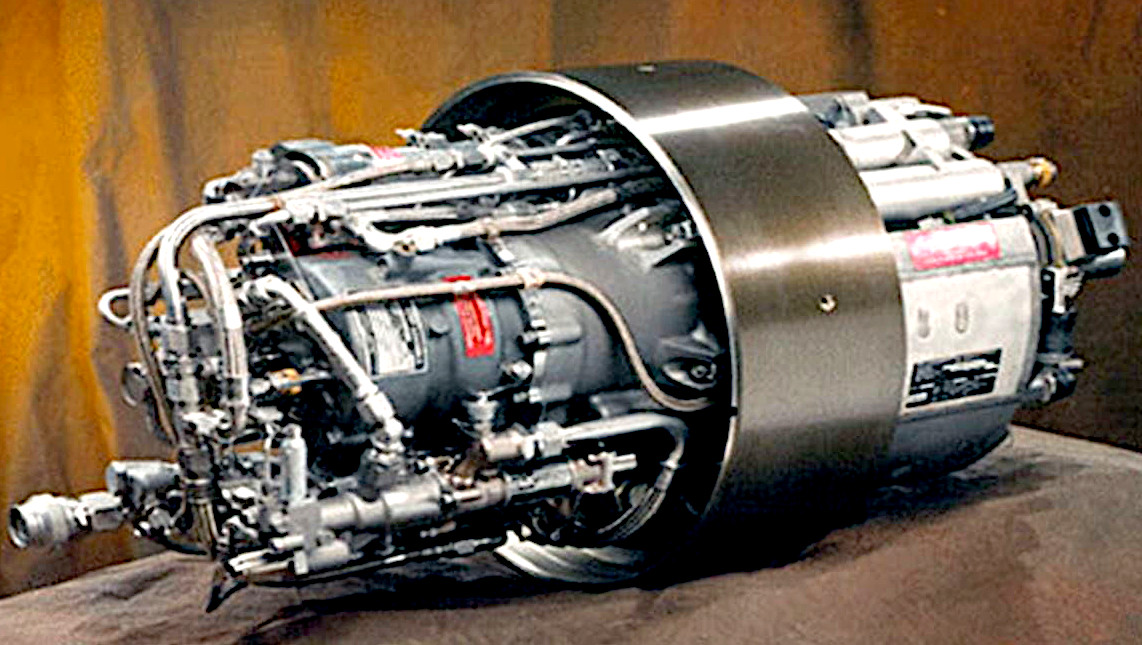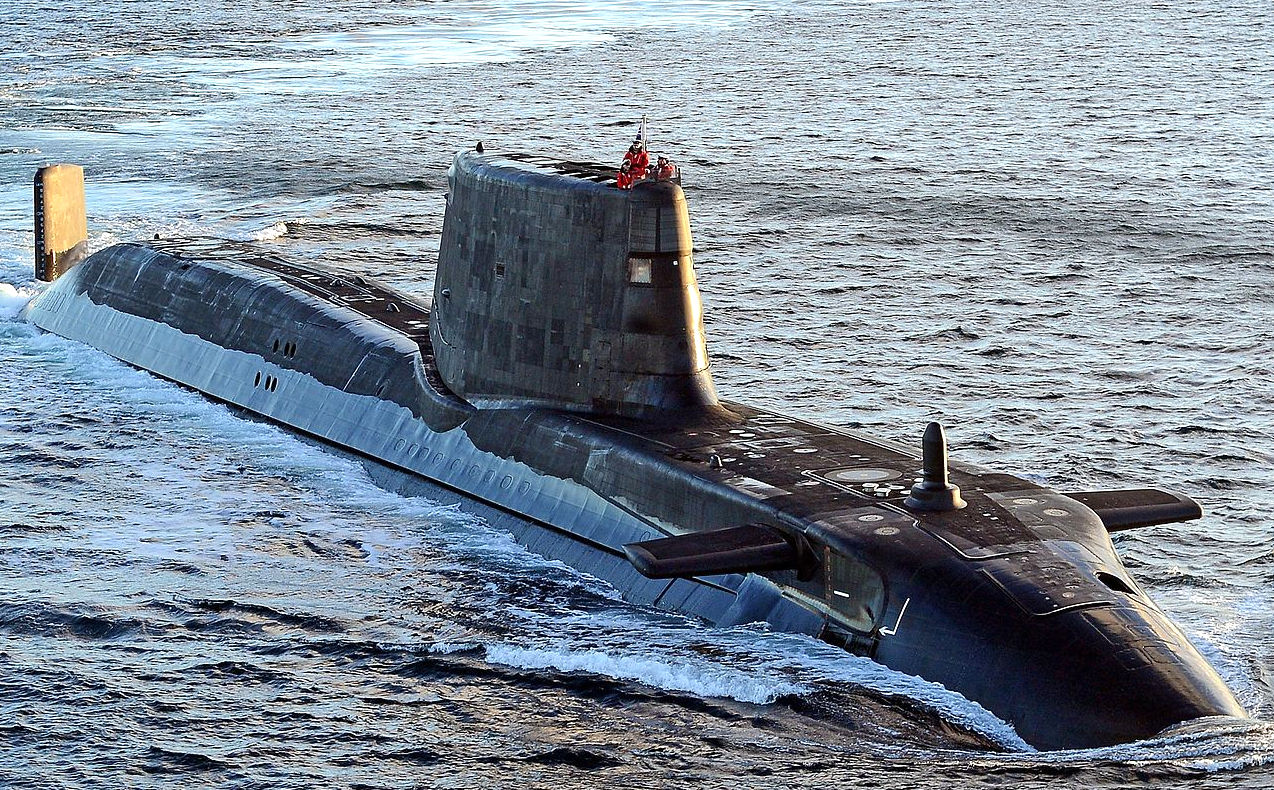|
SPEARFISH
- 7525
HEAVY TORPEDO
ATLANTIS
STORY
MAP &
OPERATION HOMEPAGE

The Spearfish torpedo (formally Naval Staff Target 7525) is
a heavy torpedo used by the submarines of the Royal
Navy. It can be guided by wire or by autonomous active or passive sonar, and provides both anti-submarine warfare
(ASW) and anti-surface ship warfare (ASuW) capability.
SPECIFICATIONS
Maximum speed: 80-knot (148 km/h)
Mass: 1,850 kg (4,080 lb)
Length: 7 m (23 ft)
Diameter: 533 mm (21 in)
Maximum firing range: 54 km (29 nmi)[1]
Warhead: Aluminised PBX explosive
Warhead weight: 300 kg (660 lb)
ABOUT
Spearfish torpedoes (formally Naval Staff Target 7525)
are the heavy torpedo used by the submarines of the Royal Navy. It can be guided by wire or by autonomous active or passive sonar, and provides both anti-submarine warfare (ASW) and anti-surface ship warfare (ASuW) capability.
The torpedo is driven by a pump-jet coupled to a Hamilton Sundstrand 21TP04 gas turbine engine using Otto fuel II and hydroxyl ammonium perchlorate as oxidiser. The addition of an oxidiser improves the specific energy of the fuel by reducing the fuel-richness of the Otto fuel.
HydraPower worked with designers and engineers to provide a solution in delivering the separated fuel types into the pump-jet motor. The fuels are extremely aggressive and a combination of exotic materials were incorporated
A microprocessor enables the torpedo to make autonomous tactical decisions during the attack. It has a powerful blast warhead, triggered by either contact detonation (against a submarine hull) or an acoustic proximity fuse (for under-keel detonation against ships). A standoff detonation under the keel enhances blast effects against surface ships through the amplification of stress resulting from the interaction of the explosion's products and the flexible structure of the ship.

The Spearfish torpedo is driven by a pump-jet coupled to a Hamilton Sundstrand 21TP04 gas turbine engine using Otto fuel II and hydroxyl ammonium perchlorate as oxidiser. The addition of an oxidiser improves the specific energy of the fuel by reducing the fuel-richness of the Otto fuel. The Spearfish, which are capable of travelling at 80 knots (150 km/h; 92 mph), were designed to catch high-speed, deep-diving Soviet threats such as the Alfa-class submarine.
A microprocessor enables the torpedo to make autonomous tactical decisions during the attack. It has a powerful blast warhead, triggered by either contact detonation (against a submarine hull) or an acoustic proximity fuse (for under-keel detonation against ships). A standoff detonation under the keel enhances blast effects against surface ships through the amplification of stress resulting from the interaction of the explosion's products and the flexible structure of the ship.
GUIDANCE
In a typical engagement, Spearfish will run out wire-guided to the general vicinity of the target and then conduct a covert passive search. The high-capacity guide wire system, specifically designed to match the Spearfish's manoeuvre and speed envelope, provides two-way data exchange between the torpedo and launch submarine, maximising the submarine's organic sensor and combat control capabilities.
Once at close range the Spearfish uses active sonar to classify and home in on its target. High-power transmissions and sophisticated signal processing enable Spearfish to accurately discriminate targets from background noise and ensure high resistance to acoustic countermeasures and/or evasive manoeuvres.
Should Spearfish fail to hit the target on its first attack, it automatically selects an appropriate re-attack mode until it successfully concludes the engagement.
OTTO FUEL II
Otto fuel II is a monopropellant used to drive torpedoes and other weapon systems. It is not related to the Otto cycle. Otto fuel II was developed by US Navy in the 1960s for use as fuel in torpedoes. Otto fuel II was invented by Otto Reitlinger in 1963 (although tests with the substance had taken place before, for example in 1960); it is named after Reitlinger and for being the second iteration of the fuel (sometimes it is known simply as Otto fuel). The first torpedo to use it was the Mark 48 torpedo in the 1960s.
OTTO FUEL PROPERTIES
Otto fuel II is a distinct-smelling (described by submariners as being similar in smell to wintergreen oil; i.e. sweet, fruity and minty), reddish-orange, oily liquid that is a mixture of three synthetic substances: propylene glycol dinitrate (the major component), 2-nitrodiphenylamine, and dibutyl sebacate. It does not need exposure to any oxidant to ignite and release energy, as its three components will react among themselves whenever vaporised and heated. Needing no oxidants and being a stable substance makes Otto fuel II ideal for use in the constrained environment of a submarine. Although the fuel can be made to explode, this requires such extreme conditions that it can be regarded as practically stable. The vapour pressure of the fuel is low (i.e., it is not volatile), minimizing toxic hazards. Finally, the fuel's energy density far surpasses the capacity of the electric battery used in other torpedoes, maximizing range.
OTTO FUEL INGREDIENTS
Named after its inventor, Otto Reitlinger, Otto fuel II consists of the nitrated ester explosive propellant propylene glycol dinitrate (PGDN), to which a desensitizer (dibutyl sebacate) and a stabilizer (2-nitrodiphenylamine) have been added. The chief component, propylene glycol dinitrate, accounts for approximately 76% of the mixture, while dibutyl sebacate and 2-nitrodiphenylamine account for approximately 22.5% and 1.5% (by weight), respectively.
The principal current use of propylene glycol dinitrate is as a propellant in Otto fuel II. Nitrates of polyhydric alcohols such as this have been used in medicine for the treatment of angina pectoris, and as explosives since the mid-nineteenth century.
In addition to its use by the United States Navy as a stabilizer in the manufacture of Otto fuel II, 2-nitrodiphenylamine is employed for similar purposes by the United States Army in the manufacture of double base solid propellants. It also has civilian applications as a solvent dye.
Dibutyl sebacate is a desensitizer in Otto fuel II. However, its major use is as a plasticizer in production of plastics, namely cellulose acetate butyrate, cellulose acetate propionate, polyvinyl butyral, polystyrene, and many synthetic rubbers. It can be used for plastics in use in the food packaging industry. It is also used as a lubricating ingredient in shaving lotions, and a flavoring additive in non-alcoholic beverages, ice cream, ices, candy, and baked goods

Collins Aerospace’s Rockford facilities are experts in supplying torpedo power plants and afterbody components. Collins has provided full life-cycle support to the U.K. MoD’s Spearfish heavyweight torpedo for 40 years. Collins has been a research and technology partner with the U.S. Navy for over 50 years to improve and supply their next generation lightweight and heavyweight torpedo systems.
Collins currently works directly with Penn State’s Applied Research Laboratory (ARL) and the U.S. Navy to design and develop the next generation of lightweight and heavyweight torpedoes.
Collins Aerospace played a key role in the design, development and manufacture of the engine which powers the British Royal Navy’s Spearfish heavyweight torpedo. When the Spearfish program at Collins Aerospace (then Sundstrand) was in its infancy, it built the Spearfish engine from existing turbine engine
(MK48) experience with the U.S. Navy. In early pre-development trials, vehicles powered by the Collins Aerospace turbine engine set records for speed, maneuverability and quiet operation.

ASTUTE
CLASS SUBMARINES CHARACTERISTICS - WEAPONS & SYSTEMS
The Astute class has stowage for 38 weapons and would typically carry a mix of Spearfish heavy torpedoes and
Tomahawk Block IV cruise
missiles, the latter costing £870,000 each. The Tomahawk missiles are capable of hitting a target to within a few metres, to a range of 1,000 miles (1,600 kilometres). In May 2022, the
MOD announced that it would be upgrading these missiles to Block V standard from 2024, which boasts an extended range and modernised in-flight communication and target selection.

SUBMARINE
INDEX
Alvin DSV
- Woods Hole Oceanographic Institution
AUKUS
- Trilateral nuclear proliferation submarine pact, Australia,
UK, US
HMS
Astute 1st of Class BAE
Systems
HMS
Vanguard- Trident
INS
Sindhurakshak - explosion
& sinking
Lusitania
- Torpedo
attack
Nuclear
PWR
reactors for submarines
Nuclear
powered submarines lost
at sea
Predator -
Covert submarine hunter/killer
Seawolf -
Autonomous wolf pack deployment of Predator mini-subs
SSN
Neptune - Astute class nuclear submarines
Torpedoes -
UUV anti submarine weapons
U20 -
Kapitan Lieutenant Walther Schwieger
U530
& U997 - Kriegsmarine Unterseeboots WWII
U534
- U-Boat sunk near Anholt, Denmark 1945, raised (no gold)
U986
- U-Boat declared missing in 20 April 1944 VIIC
USS
Bluefish WWI submarine
USS
Bluefish - Nuclear submarine
USS
Flying Fish - Nuclear sub
USS
Jimmy Carter - Seawolf class fast attack
nuclear submarine
USS
Nautilus - 1st nuclear submarine &
subsea north pole passage
USS
Scorpion - Skipjack class submarine 99 crew lost at sea
https://www.collinsaerospace.com/

CHARACTERS
|
GOLD |
MEDIA |
MOVIES |
SCREENPLAY |
SUBMARINES
This
website is Copyright © Cleaner
Oceans Foundation Ltd., May 2023. Asserted as per the Berne
Convention.
In
this fictional story, the characters and events are the
product of the author's imagination.
|





